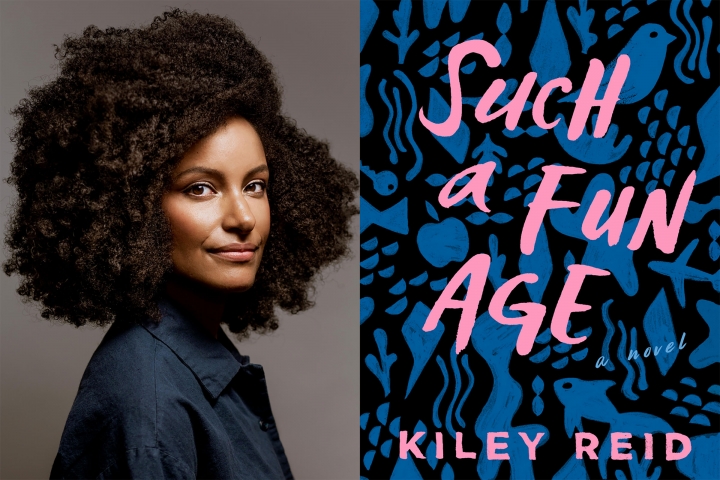 “Such a Fun Age” by Kiley Reid is a compelling and thought-provoking novel that delves into issues of race, privilege, and identity. The story revolves around two central characters, Emira Tucker, a young African-American woman, and Alix Chamberlain, a wealthy white woman. The narrative takes an unexpected turn when Emira, a babysitter, is accused of kidnapping the white child she cares for, Briar, at a local grocery store.
“Such a Fun Age” by Kiley Reid is a compelling and thought-provoking novel that delves into issues of race, privilege, and identity. The story revolves around two central characters, Emira Tucker, a young African-American woman, and Alix Chamberlain, a wealthy white woman. The narrative takes an unexpected turn when Emira, a babysitter, is accused of kidnapping the white child she cares for, Briar, at a local grocery store.
The incident sets off a chain of events that exposes the complexities of the characters’ lives. Emira, struggling to find her place in the world, is caught between her aspirations and the expectations society places on her. Alix, on the other hand, grapples with her own insecurities and the facade of her seemingly perfect life. The novel weaves through their interconnected lives, addressing issues of race, class, and the well-intentioned but often misguided attempts at allyship.
Reid’s storytelling is both poignant and humorous, engaging readers with a narrative that challenges preconceived notions and societal norms. The exploration of contemporary social issues is skillfully interwoven with a gripping plot, making “Such a Fun Age” a must-read for those seeking a novel that both entertains and provokes thoughtful reflection.
Such a Fun Age Characters
The characters in “Such a Fun Age” are richly developed and multifaceted. Emira Tucker is portrayed as a relatable and genuine protagonist. Her struggles with identity and societal expectations resonate with readers from various backgrounds. Alix Chamberlain, while initially appearing as the typical successful woman, reveals layers of complexity and vulnerability as the story progresses. The supporting characters, including Zara, Emira’s friend, and Kelley, a love interest, add depth to the narrative.
Reid’s characterizations are a testament to her ability to capture the nuances of human relationships. Each character serves as a lens through which the author explores themes of privilege, ambition, and the impact of societal expectations on personal growth.
Such a Fun Age Ending Explained (Spoilers)
In the final chapters of “Such a Fun Age,” the narrative takes unexpected twists that challenge readers’ assumptions about the characters. Alix’s actions, driven by a desire to maintain control and protect her image, lead to a confrontation with Emira. The revelation of Alix’s past actions raises questions about accountability, privilege, and the complexities of well-intentioned yet misguided allyship.
The novel’s ending leaves room for interpretation, encouraging readers to reflect on the consequences of actions and the potential for growth and redemption. Emira’s decision to confront Alix and assert her own agency signifies a crucial moment of empowerment. Reid masterfully crafts an ending that avoids easy resolutions, prompting readers to grapple with the ambiguity of real-life situations.
F.A.Q
Is It Based on a True Story? No, “Such a Fun Age” is a work of fiction. However, the narrative draws inspiration from real-life issues and societal dynamics, offering a fictional exploration of contemporary challenges related to race, privilege, and identity.
What Is the Main Idea of the Book? The main idea revolves around the exploration of race, privilege, and identity. Reid skillfully uses the central characters and their interactions to delve into the complexities of these issues, inviting readers to critically examine societal norms and expectations.
Is This Book Worth Reading? Absolutely. “Such a Fun Age” is not only a captivating novel with a compelling plot, but it also serves as a valuable exploration of important social issues. Reid’s storytelling and character development make it a worthwhile and thought-provoking read.
What Is the Symbolism in This Book? Symbolism is prevalent throughout the novel, with the grocery store incident serving as a metaphor for societal expectations, biases, and the consequences of well-intentioned actions. The characters and their interactions symbolize larger societal dynamics, inviting readers to reflect on their own roles in perpetuating or challenging existing norms.
In conclusion, “Such a Fun Age” stands out as a remarkable novel that goes beyond traditional storytelling. Reid’s exploration of privilege and identity, coupled with a compelling plot and well-developed characters, makes it a must-read for anyone seeking a thought-provoking and engaging literary experience.


